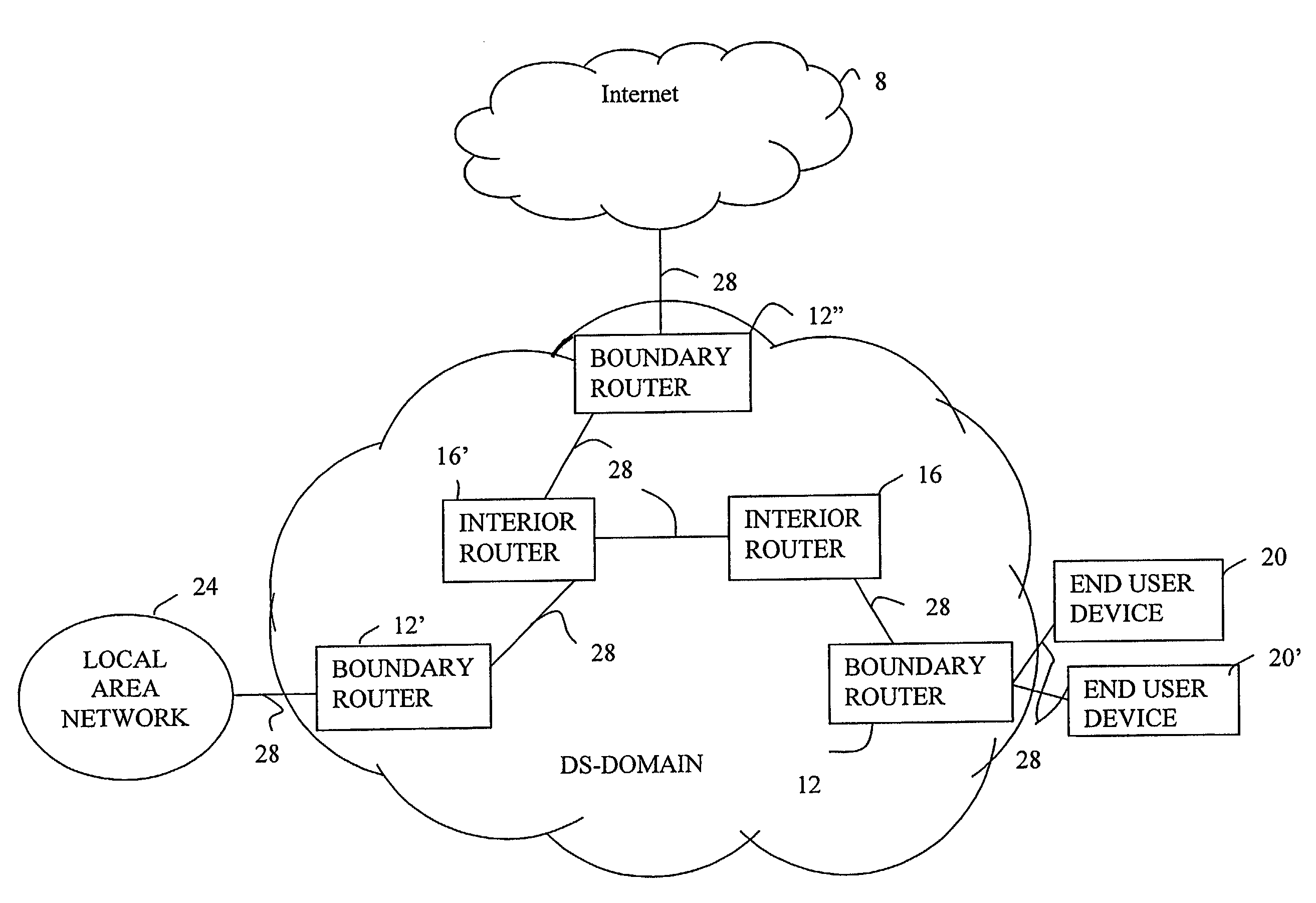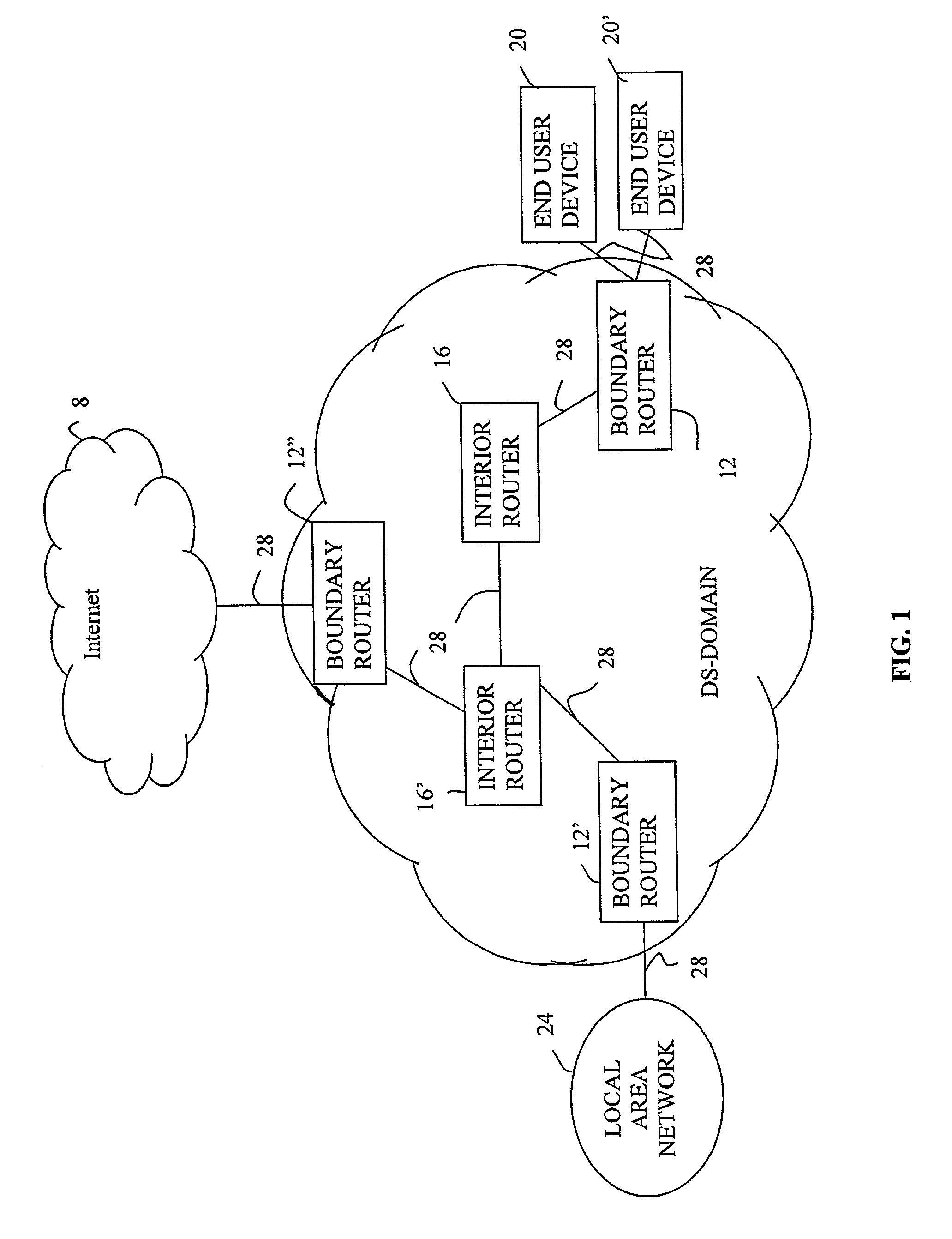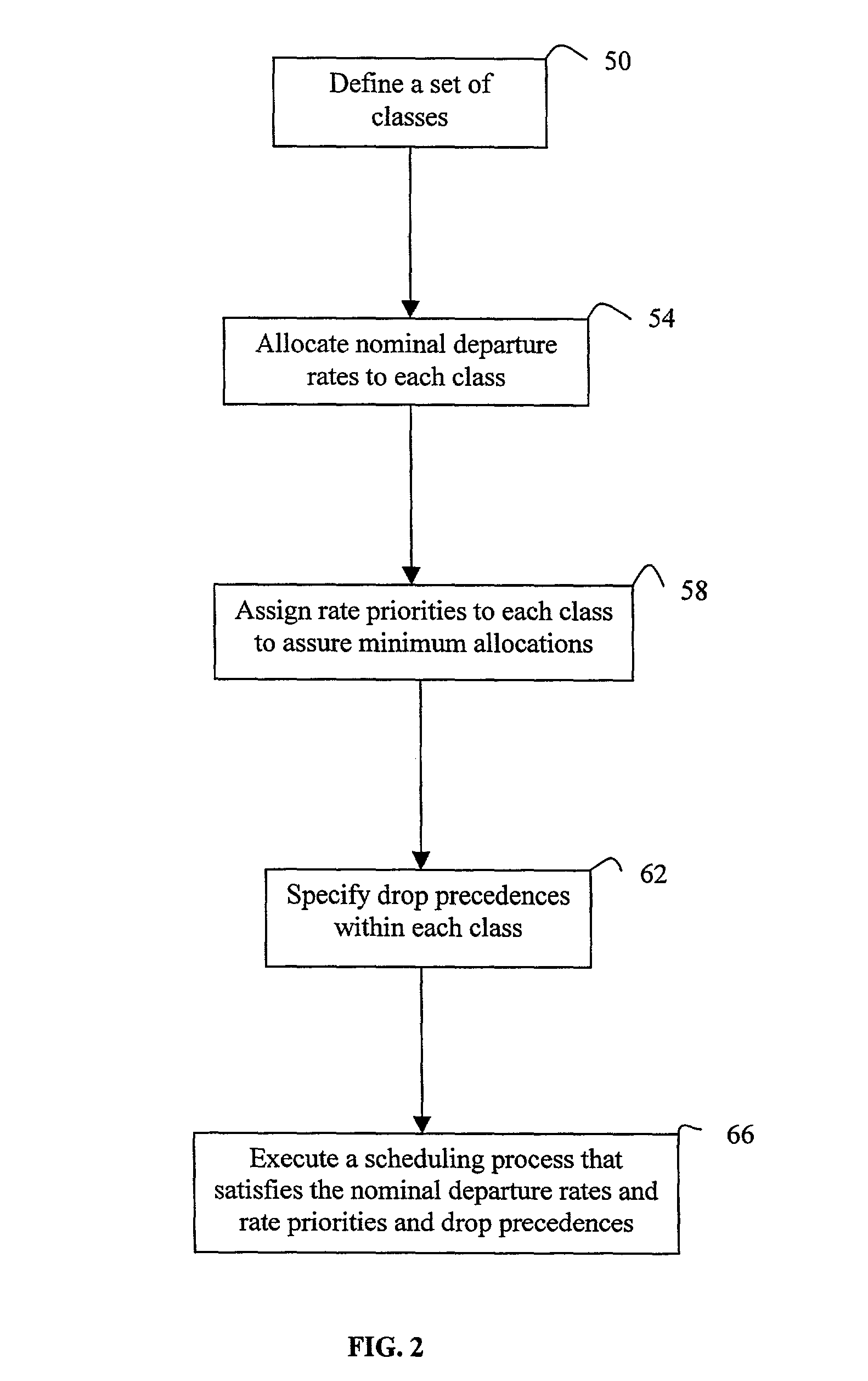Scheduling mechanisms for use in mobile ad hoc wireless networks for achieving a differentiated services per-hop behavior
- Summary
- Abstract
- Description
- Claims
- Application Information
AI Technical Summary
Benefits of technology
Problems solved by technology
Method used
Image
Examples
example
CBQ-AR (Class Based Queuing with Adaptive Rate)
[0046]As an example, suppose that classes A, B and C have allocated nominal departure rates of 25%, 50%, and 25%, respectively, and class A has a higher scheduling priority than class B, and class B has a higher scheduling priority than class C. An allocation of rate priority percentages of 50%, 50% and 0% to classes A, B, and C, respectively, illustrates that the rate priority percentages need not be proportional to the nominal departure rate allocations.
[0047]In this example, class A, which has the highest rate priority, is guaranteed its allocated nominal departure rate even if the actual available bandwidth drops by 50% (because class A is guaranteed 50% of the actual available bandwidth). If the available bandwidth drops to 75% of the nominal bandwidth, then classes A and B still receive their allocated nominal departure rates, but class C is not guaranteed any bandwidth. (Class C can have some throughput if classes A and B do not ...
PUM
 Login to View More
Login to View More Abstract
Description
Claims
Application Information
 Login to View More
Login to View More - R&D
- Intellectual Property
- Life Sciences
- Materials
- Tech Scout
- Unparalleled Data Quality
- Higher Quality Content
- 60% Fewer Hallucinations
Browse by: Latest US Patents, China's latest patents, Technical Efficacy Thesaurus, Application Domain, Technology Topic, Popular Technical Reports.
© 2025 PatSnap. All rights reserved.Legal|Privacy policy|Modern Slavery Act Transparency Statement|Sitemap|About US| Contact US: help@patsnap.com



